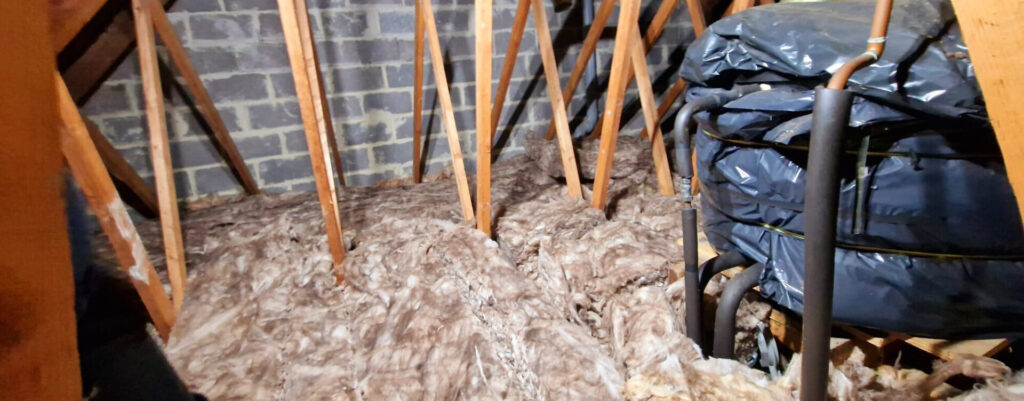
Improving the energy efficiency of your home is increasingly becoming a priority for homeowners across the UK. One of the most effective ways to enhance this efficiency is through the installation of loft insulation. By preventing heat loss through the roof, loft insulation can help maintain a comfortable indoor temperature year-round, reducing the need for excessive heating and ultimately lowering energy bills. In this post, we’ll explore how loft insulation impacts your home’s energy efficiency rating, the benefits it brings, and why it’s a critical update for any energy-conscious homeowner.
Understanding Loft Insulation and Energy Efficiency
Loft insulation works by reducing the heat transfer between your home and the outside environment. During the winter months, insulation prevents warm air from escaping through the roof, while in the summer, it keeps hot air from infiltrating your living spaces. This thermal resistance is measured in terms of ‘R-values’, the higher the R-value, the greater the insulation’s effectiveness.
The primary role of loft insulation in improving energy efficiency is its ability to maintain a stable temperature within your home. By doing so, it significantly reduces the need for heating and cooling, which are among the largest contributors to energy consumption in a household.
The Direct Benefits of Loft Insulation
- Reduced Energy Bills – By maintaining a more consistent indoor temperature, loft insulation decreases the demand on your heating and cooling systems. This reduction can lead to substantial savings on your energy bills, with many homeowners seeing a return on their insulation investment within a few years.
- Increased Comfort – Homes with well-insulated lofts prevent drafts and cold spots, which contributes to a more comfortable living environment. This means fewer adjustments to your thermostat, leading to less wear and tear on your HVAC system and more consistent temperatures throughout your home.
- Lower Carbon Footprint – By using less energy to heat and cool your home, you’re also reducing your home’s carbon emissions. Loft insulation is a straightforward measure that supports your efforts to live more sustainably.
- Enhanced Property Value – Homes with better energy efficiency ratings often command higher prices on the property market. As energy costs continue to rise and environmental concerns become more pressing, energy-efficient homes are becoming increasingly desirable.
How Loft Insulation Improves Your Energy Performance Certificate (EPC)
The Energy Performance Certificate (EPC) rates how energy-efficient your home is, using a scale from A (most efficient) to G (least efficient). Loft insulation can significantly improve your home’s EPC rating. An improved rating not only makes your property more attractive to potential buyers or renters but can also comply with increasing regulatory standards that may require a minimum EPC rating before sale or rent.
Considerations for Installing Loft Insulation
When planning for loft insulation, there are several important factors to consider to ensure you maximize its benefits. Choosing the right type of insulation material is crucial, as each type has its own advantages depending on your loft space and specific needs. Common options include blanket insulation, loose-fill, and foam boards. Blanket insulation, for instance, is popular for its ease of installation, while loose-fill may be better for hard-to-reach areas, and foam boards can offer superior thermal performance in certain conditions.
Current UK guidelines recommend a minimum depth of 270mm for optimal energy efficiency. Homes with older insulation, which may not meet this standard, can benefit greatly from an upgrade, potentially realizing significant energy savings. We recommend professional installation is advisable to ensure the insulation performs as intended. Incorrect installation can compromise its effectiveness, leading to issues such as thermal bridging, where heat escapes through gaps, or even damp if the insulation traps moisture.
Searching For Loft Insulation in Portsmouth?
As specialists in loft insulation, we understand the transformative effect it can have on a home’s energy efficiency. Investing in quality loft insulation not only optimises your energy consumption but also enhances your living comfort and boosts your home’s value. For homeowners looking to reduce their energy bills and improve their carbon footprint, updating loft insulation is a clear step forward.
For those considering an insulation upgrade, it’s important to choose a trusted and experienced installer. Ensuring your loft is properly insulated can make all the difference in achieving the energy savings and comfort you desire. Reach out to our team at Lost Insulation Specialists for expert advice and professional installation services tailored to your home’s needs. In this way, loft insulation serves not just as a financial benefit but as a step towards a more energy-efficient and environmentally friendly home.
If you need loft insulation in Portsmouth, give us a call on 03335 330029 or 07706 342174 and we will be happy to help and answer any questions.








